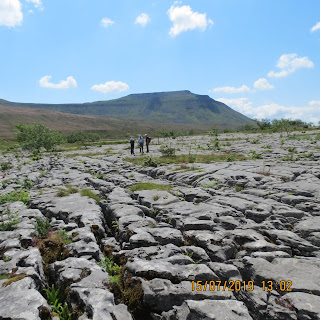I am in the middle of a training course about Mental Health First Aid, and after the last session our homework was to do a "Happiness Hour" - in other words, to spend an hour doing something that made us happy, and then to notice the effect it had on us.
I decided to spend an hour bird-watching as this usually makes me happy. So I went down to South Gare this morning with my binoculars, telescope and camera, and also a camping chair, a flask of coffee and lots of warm clothes. The plan was to sit at the end of the Gare for an hour or so, watching whatever birds I could see, and to just enjoy the experience.
It was a cold, clear and fairly still day - perfect conditions - but despite this I didn't see another person for the whole time I was sitting there. I did however see a few interesting birds. Scanning the sea surface with my telescope revealed at least five different Red-throated Divers and a couple of Guillemots - all in their winter plumage. In the case of the divers, the difference between the summer and the winter uniform is quite striking. In the summer they have bright red patches on their throats but these birds were all grey on the upper sides and white on the underparts and the face. However, it is the distinctive shape, with a needle-like upward-pointing bill and the pattern of the white and grey that distinguishes Red-throated Divers from other bird species that might be seen on the sea off the British coast in November.
While I was scanning I spotted a tight group of about 20 small black ducks flying north over the surface of the waves in the distance - Common Scoters. I was on the lookout to see if any of them had a flash of white in the wings which would have made them Velvet Scoter, but sadly no.
At one point while I was sitting remembering a previous sea-watching session at the Gare when a Purple Sandpiper had come and landed just in front of where I was sitting, I looked up and about a second later it happened again - a Purple Sandpiper flew in from the right and landed on the concrete about ten meters from me. It didn't stay there long before flying down onto the concrete blocks reinforcing the end of the gare but I was able to get some pictures of it, clinging on to the sloping surface and probing the crevices looking for small invertebrates to eat. Later I saw it (or possibly another one) round on the south side of the gare alongside a Turnstone, where I was able to get a nice picture showing the similarities and differences between the two species.
Both Purple Sandpiper (Calidris maritima) and Turnstone (Arenaria interpres) breed in northern latitudes, including the high arctic, with Turnstone occurring over a wider range both in the summer (it breeds as far north as Ellesmere Island and the north of Greenland, and as far south as the Baltic Sea) and in the winter, when it gets down to the southern tips of both Africa and Australia and about three-quarters of the way down South America. In the UK it is a very common species on coasts in the winter but can be seen at almost any time of year and in many different coastal habitats. It gets its name from its habit of turning over stones to find food. The Purple Sandpiper on the other hand is more restricted in its breeding range and also only reaches as far south as southern Spain and halfway down the east coast of the USA in the winter and doesn't occur in the Pacific or Indian Oceans at all. In the UK it is much harder to see than the Turnstone and is hardly ever seen away from the very edges of the water on rocky coasts and usually doesn't appear until late autumn.
So, back to the Happiness Hour - how did it make me feel? It did really make me feel happy. I spent an hour and a half sitting on a chair right at the edge of the land and didn't once think of Brexit, the General Election, Facebook (we-e-e-ell I might have looked at it once), money, work or any of the other things that I normally worry about. It was cold (although thankfully not rainy) but I was well protected from the cold, and I felt as if the cobwebs had been blown away. I have never been a massive fan of sea-watching but today I thought that I ought to do it more often.
 |
| Although it's not really purple in my view, I suppose I might concede that the Purple Sandpiper is at least 'purplish' in colour |
 |
| Purple Sandpipers and Turnstones are often seen together, although Turnstones are much less fussy about the habitats they choose |
















































